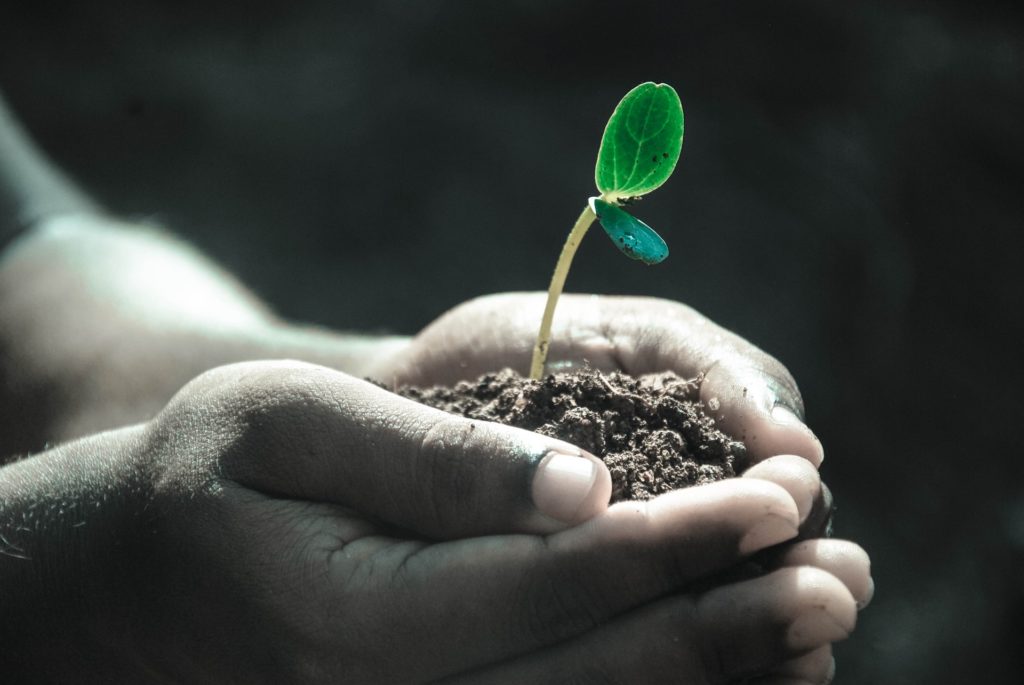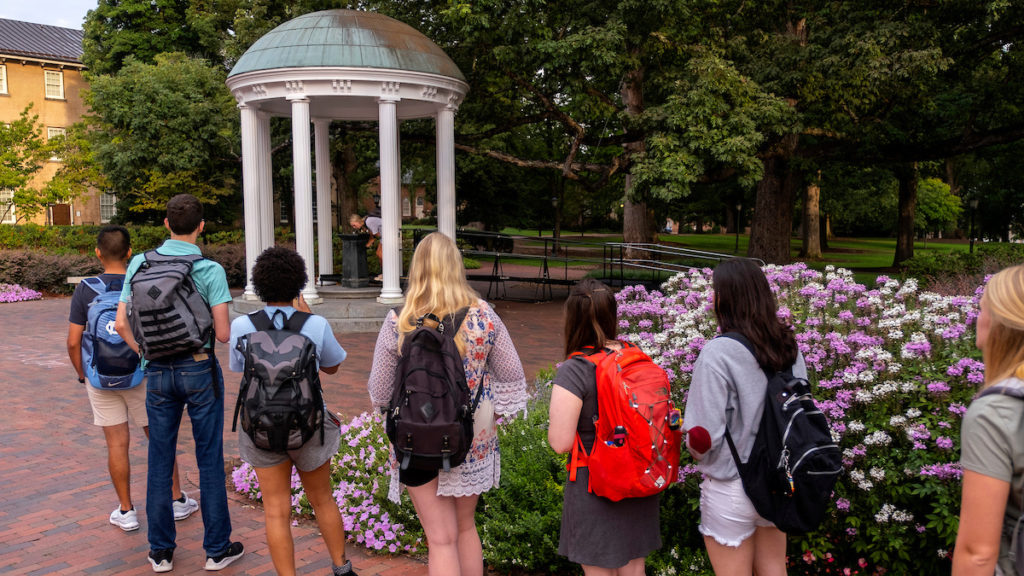“Step Right Up” is a fitting name for Patrick Dougherty’s latest outdoor sculpture at the Ackland Art Museum in Chapel Hill. That’s essentially what he’s been inviting the public, fascinated with his larger-than-life stick sculptures, to do for the last 30 years.
Step right up. Walk around. Go inside. Look up and down. Explore.

“There’s intrigue in thinking about what it would be like to stand inside a teapot, and we made one big enough for Aladdin to come out of,” Dougherty said, chuckling softly as he took a break from construction on a late October afternoon. “There’s also the excitement of productivity that we assign to a stick, starting from childhood. It’s a drumstick, a piece of a wall, all of the things that you can imagine.”
A clay animal-shaped pouring vessel in the Ackland’s permanent collection caught Dougherty’s eye and served as the inspiration for five mammoth vessels constructed on the museum’s “front lawn” (the side facing Columbia Street). “Step Right Up” will be on display through August 2018; it’s the first major site-specific outdoor art installation by the museum in nearly 20 years.
The saplings used to make the sculpture, primarily maple and gum, were donated by Duke Forest and Triangle Land Conservancy and harvested with the help of a network of volunteers. Their support in gathering sticks by the truckload and then preparing them for use in construction helps to “embed the work in the community,” Dougherty said.
“It’s hard to hate a sculpture if your neighbors are working on it. It also humanizes the process,” he said. “Over three weeks, people see transition, and it goes from a common material to a more elaborate illusion.”

The experience has been a homecoming of sorts for Dougherty, who received a bachelor’s in English from UNC-Chapel Hill’s College of Arts & Sciences in 1967. He then went on to earn a master’s in hospital and health administration from the University of Iowa in 1969, and returned to UNC’s art department for post-graduate work in 1981 and 1982.
Dougherty said his time in the English department helped him to think about the conventions writers employ in making an exciting narrative, and he applies that to his art.
“When you’re trying to have a conversation with the public, and to elicit feelings and emotions through your work, that’s not unlike creating a great novel,” he said. “There was a lot of value in learning what makes something have resonance and power.”
He also values his post-graduate studies, especially with professors Mike Cindric (clay and sculpture) and Richard Kinnaird (drawing), who taught in UNC’s art department. The visiting artist program had a significant impact on him as well. To this day he remembers clay artist Susan Peterson saying “It’s just as easy to be a national artist as a local artist, but you have to want to be in the nation.”
For Dougherty, that has meant creating nearly 300 sculptures all over the United States and the world, from Scotland to Japan to Brussels to France. He’s constructed works for botanical gardens, children’s museums, universities, a winery, a zoo, even the U.S. Embassy in Serbia. “It has involved a lot of rental cars and meeting thousands of people and working with hundreds of organizations,” he said.

He has received numerous awards, including a Factor Prize for Southern Art, a National Endowment for the Arts Fellowship and a Japan-U.S. Creative Arts Fellowship. His work has been featured in a book, numerous media outlets and a documentary.
Still fame is elusive, Dougherty said, adding that “when I come home, my wife brings me back down to earth and says, ‘the yard needs raking.’”
After working with sticks eight hours a day, he still does his own yardwork?
“Oh yeah, I love physical activity and working. It’s been good for me,” he said.
The work is indeed physical, bending and shaping sticks eight hours a day, three weeks at a time, in all kinds of weather. Dougherty said it’s very agrarian, “a lot like farm work,” but he has no intention of slowing down. Right now he has installations scheduled through 2019.
When asked if he considers himself an environmental artist, Dougherty said the context of his work has changed over the years. People are now more willing to accept it as being temporary, and they respond to it through their own feelings about the environment.
“It reminds people of all of the moments they might have had,” he said. “It’s a bird’s nest, that first kiss under the lilac bush, a forest you took a walk in, a significant moment.”
“A lot of times people will ask me, ‘what does it mean?’ And I say, ‘it’s more about how it makes you feel.’”
Video by Kristen Chavez and story by Kim Spurr, College of Arts & Sciences; photos by Audrey Shore, Ackland Art Museum




